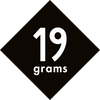Many will recognize themselves in this routine: A cup of coffee in the morning to wake up. Before this cup please do not address and with work you do not even have to start. But why is it that so many people can't do without their morning coffee? Apart from the fantastic taste profile of Specialty Coffee, the solution is obvious: caffeine. But what is this magical pick-me-up actually, how is it created, and how much caffeine is healthy? In this blog article, you'll learn everything you need to know about the effects of brown gold.
Germany - the land of coffee drinkers
The numbers speak for themselves: Germans love their coffee. Studies found that nine out of ten Germans drink coffee, and not just a little! On average, three cups of coffee are consumed daily - not bad!
What is caffeine?
Caffeine is alkaloid found in over 60 plants, including the coffee bush, tea bush, mate tree or cola tree. Biologically, caffeine's primary purpose is to keep away, stun, or even kill pests.
The discovery of caffeine
In 1819, caffeine was extracted from coffee beans for the first time. The German chemist Friedrich Ferdinand Runge, then still a medical student, was to be the first to succeed in extracting caffeine from the coffee bean. Also involved in the discovery was the poet and naturalist Johann Wolfgang von Goethe. He recognized its potential, which was to be used not only in medicine.
Effect of caffeine
Caffeine stimulates the body in a way that improves concentration, reduces fatigue and strengthens endurance. The effect is relatively immediate after consumption, as caffeine enters the bloodstream directly.
The body becomes more alert because caffeine counteracts the nucleoside adenosine. This in fact ensures that the body works less when too much energy is consumed. Caffeine ensures that the cells do not receive this information and thus the power saving mode is not activated.
Which coffee has which caffeine content?
The Arabica and Robusta coffee families have different caffeine contents. Arabica is around 1.1 to 1.7, while Robusta is at a higher dose of 2 to 4.5%.
It is impossible to say in simplified terms whether a filter coffee or espresso is stronger. The amount of caffeine in the drink depends on the amount of coffee powder, the amount of water anyway the extraction time. As a rule, filter coffee uses more powder and this is longer in contact with the water. Since espresso has less powder, less water and a shorter extraction time, there is more caffeine in a sip of this delicious drink, but when extrapolated to the cup, filter coffee wins.
Our all time favorites are the Espresso Italio Disco and the Filter La Granada. Don't know them yet? Well, it's high time you did!
Can you drink too much coffee?
The European Food Safety Authority considers an amount of 400 mg of caffeine to be unproblematic. That's roughly equivalent to four to five cups of coffee. So most coffee fans should be able to breathe easy ;)
Of course, it's best for everyone to listen to their own bodies, because everyone reacts differently to caffeine. We recommend: Coffee is a stimulant for us, from there we stand for consumption in moderation and not in masses.
Decaf - enjoyment without caffeine
If you love the taste of coffee, but would rather avoid the effect of caffeine or still want to enjoy a coffee in the evening, we have a great solution for you: our Decaf coffees! They are available in filter, espresso and pods versions! Through various processes, the caffeine can be released from the beans.
Low Caf - Naturally low caffeine
Have you ever heard of the Laurina variety? If not, then it is high time! It is a special coffee variety due to its extremely low caffeine content. The caffeine content of the Laurina bean is naturally very low - it is only 0.4%-0.7%. So, unlike decaffeinated coffees, these beans do not need to be decaffeinated by a special process.




